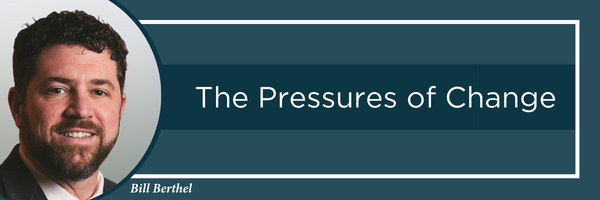Many of our parents and grandparents stayed in the same job for most of their career because their jobs provided a sense of security. Perhaps you, too, are a “lifer” in your organization. There was a time when American workers chose a job, whether consciously or subconsciously, because of the employer’s ability to shelter them from change and volatility.
Those times are largely gone. Modern markets demand rapid growth and constant change, more than leadership can do on its own. So organizations are pushing more of the responsibility to grow and change onto their workforces, which, by and large, would rather things remain the same.
I know this is going to sound harsh, but most people are followers. They may have the capacity and potential for leadership, but they want to be cared for, sheltered, secured and soothed. They want things to improve, but they don’t want their roles and responsibilities to change.
This tendency follows a fundamental law of nature. The Path of Least Resistance slows the process of entropy. People tend to see change as a form of entropy–a descent into chaos and disorder. Workers don’t want chaos. They want improvement, not degradation.
But change is inevitable, and the most successful organizations know this. They also know that many of their employees will respond negatively to change. The solution to this dilemma is care. The businesses that are winning and will continue to win are those that support their employees while thoughtfully growing them from the inside out. Their employees have to adapt, but the process is facilitated rather than forced. Change is not an external pressure, but an internal incentive.
I’m not suggesting leaders shelter their people. However, organizations have a unique advantage over independent agents in the workforce: their size. Large organizations, when well-led and well-managed, can disperse the immediate effects of change. Because of their size and complexity, they can, and to some extent must, take a “slow and steady” approach. This allows their employees the space to adapt to new practices and wrap their minds around the purpose of the change. Rather than feeling scared or threatened, they feel included and empowered. In other words, size provides a sense of security in a changing business.
This is why organizations grow. Large businesses have the stability necessary to make big changes with minimal drama. But size is not enough. First and foremost, leaders must learn to communicate not only the what and the how, but the why behind the changes. The more honest and transparent their reasoning, the more confidence their employees will have in the logic of the change. Second, leaders must commit to sharing the benefits of the change with their employees, such as increased profits and new opportunities. If honesty and wealth-sharing are normalized, the workforce will no longer fear change in their organizations. They will learn to see it as an exciting and attractive opportunity to lift all boats.
If you need help leading your organization through a major change, or are looking to shift to a more pro-change mindset, send me an email at [email protected]. I’d be happy to help.

Comments (0)